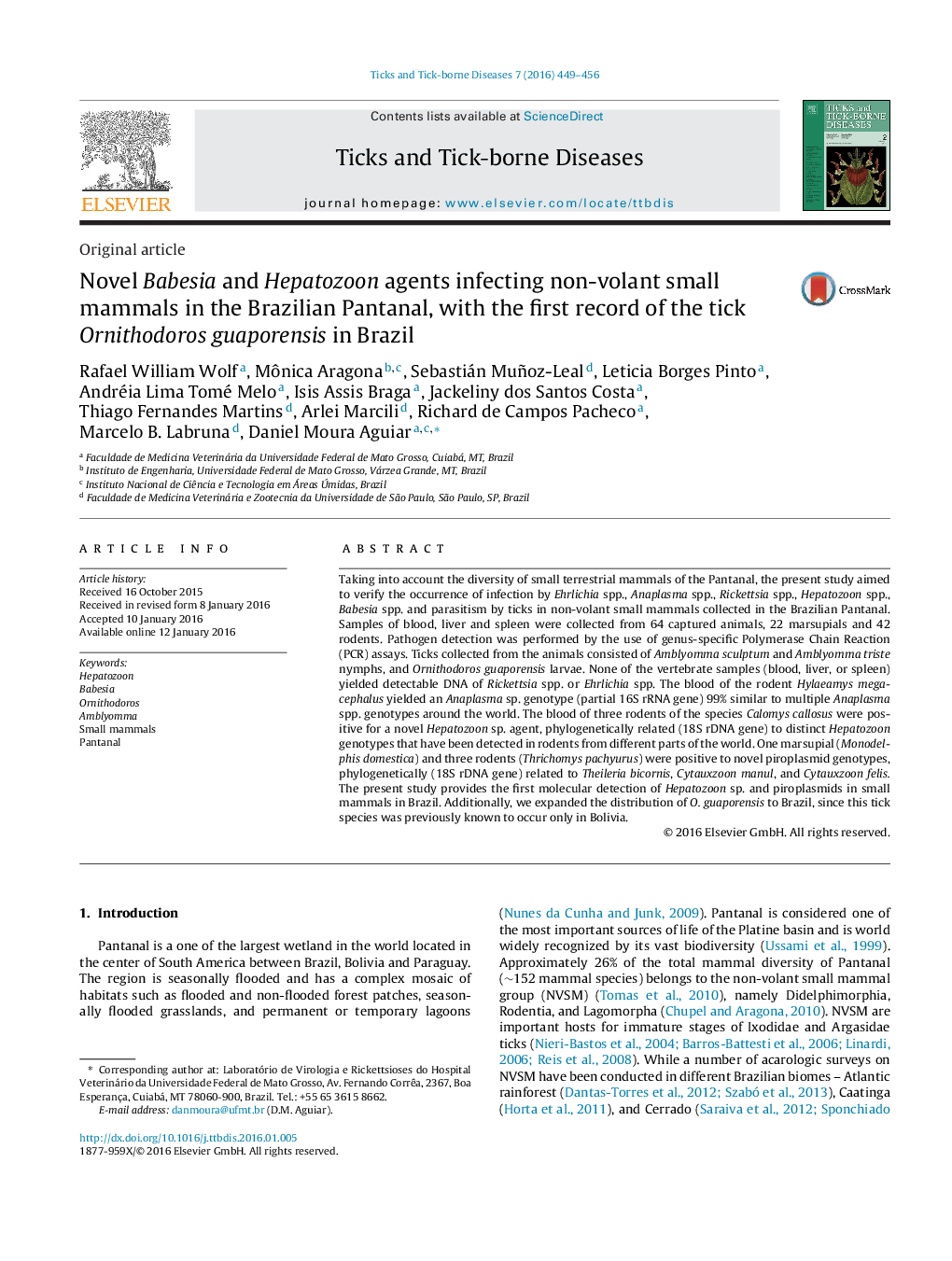| Article ID | Journal | Published Year | Pages | File Type |
|---|---|---|---|---|
| 2473902 | Ticks and Tick-borne Diseases | 2016 | 8 Pages |
Taking into account the diversity of small terrestrial mammals of the Pantanal, the present study aimed to verify the occurrence of infection by Ehrlichia spp., Anaplasma spp., Rickettsia spp., Hepatozoon spp., Babesia spp. and parasitism by ticks in non-volant small mammals collected in the Brazilian Pantanal. Samples of blood, liver and spleen were collected from 64 captured animals, 22 marsupials and 42 rodents. Pathogen detection was performed by the use of genus-specific Polymerase Chain Reaction (PCR) assays. Ticks collected from the animals consisted of Amblyomma sculptum and Amblyomma triste nymphs, and Ornithodoros guaporensis larvae. None of the vertebrate samples (blood, liver, or spleen) yielded detectable DNA of Rickettsia spp. or Ehrlichia spp. The blood of the rodent Hylaeamys megacephalus yielded an Anaplasma sp. genotype (partial 16S rRNA gene) 99% similar to multiple Anaplasma spp. genotypes around the world. The blood of three rodents of the species Calomys callosus were positive for a novel Hepatozoon sp. agent, phylogenetically related (18S rDNA gene) to distinct Hepatozoon genotypes that have been detected in rodents from different parts of the world. One marsupial (Monodelphis domestica) and three rodents (Thrichomys pachyurus) were positive to novel piroplasmid genotypes, phylogenetically (18S rDNA gene) related to Theileria bicornis, Cytauxzoon manul, and Cytauxzoon felis. The present study provides the first molecular detection of Hepatozoon sp. and piroplasmids in small mammals in Brazil. Additionally, we expanded the distribution of O. guaporensis to Brazil, since this tick species was previously known to occur only in Bolivia.
